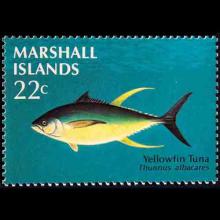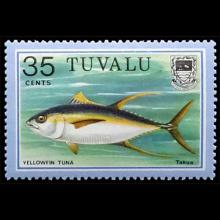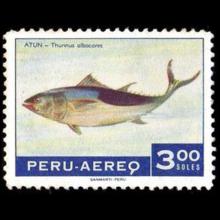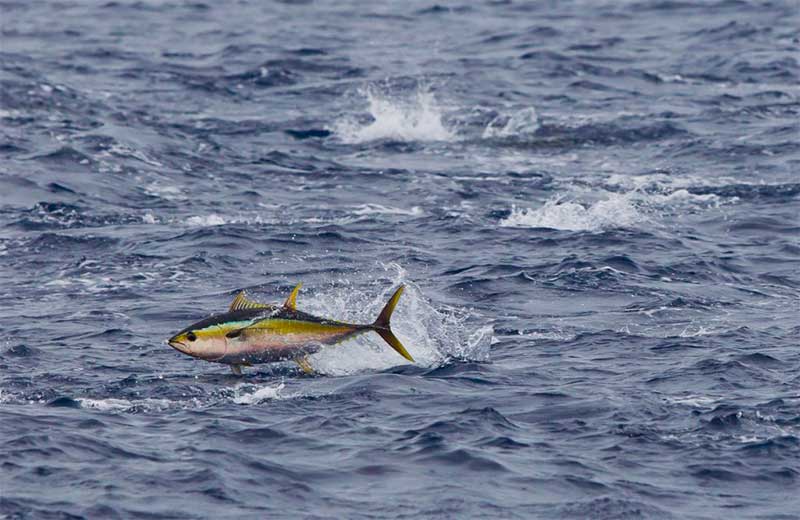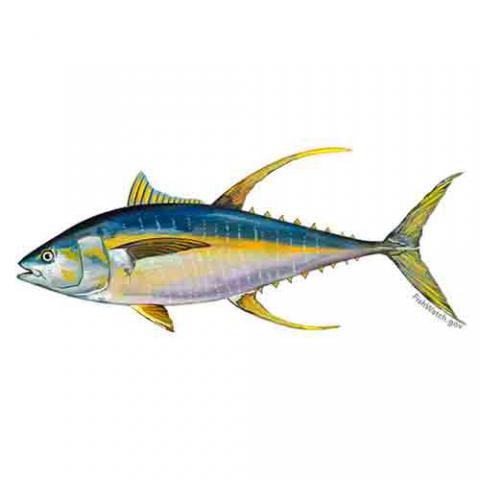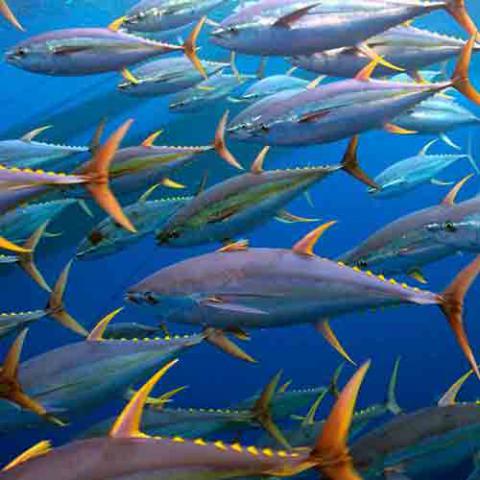NAMES
TAXONOMY
Marshall Islands
Issued:
Stamp:
Thunnus albacares
Tuvalu
Issued:
Stamp:
Thunnus albacares
Peru
Issued:
Stamp:
Thunnus albacares
Marshall Islands
Issued:
Stamp:
Thunnus albacares
Tuvalu
Issued:
Stamp:
Thunnus albacares
Peru
Issued:
Stamp:
Thunnus albacares
Marshall Islands
Issued:
Stamp:
Thunnus albacares
Tuvalu
Issued:
Stamp:
Thunnus albacares
Peru
Issued:
Stamp:
Thunnus albacares
If You Eat Tuna, You Should Know These Five Fish (excerpt)
5 May 2014
Use this quick guide to get to know the fish on your plate.
YELLOWFIN (Thunnus albacares)
Yellowfin are widespread and magnificently-streamlined fish. And, yes, they have yellow fins, including characteristically sickle-shaped elongated go faster ones. They are found around the world but mostly confined to tropical waters. They can grow to over 2 meters in length. Yellowfin tuna can be found either in cans or sold fresh and frozen as tuna steaks. You may also find it in sushi. The package should tell you what species it is (if it doesn't, don't buy it!). Like skipjack, yellowfin are caught with purse seines, and when FADs are used the vast majority are young yellowfin that never get a chance to breed. Another method of catching them is using longlines: lines of baited hooks that can be many miles long. This method of fishing can be very indiscriminate and responsible for lots of bycatch sharks, swordfish, turtles, and seabirds can all fall victim to the baited hooks. Longlining is the main reason that global albatross populations are endangered, and as with purse seining, some of the species caught and killed are endangered sharks and turtles too.
TOP TIP: only choose pole & line caught yellowfin, and eat it sparingly.
Genus species (Animalia): Thunnus albacares
The yellowfin tuna (Thunnus albacares) is a species of tuna found in pelagic waters of tropical and subtropical oceans worldwide. Yellowfin is often marketed as ahi, from the Hawaiian ʻahi, a name also used there for the closely related bigeye tuna. The species name, albacares ("white meat") can also lead to confusion: in English, the albacore tuna (Thunnus alalunga) is a different species, while yellowfin is officially designated albacore in French and referred to as albacora by Portuguese fishermen.
Description
The yellowfin tuna is among the larger tuna species, reaching weights over 180 kg (400 lb), but is significantly smaller than the Atlantic and Pacific bluefin tunas, which can reach over 450 kg (990 lb), and slightly smaller than the bigeye tuna and the southern bluefin tuna.
The second dorsal fin and the anal fin, as well as the finlets between those fins and the tail, are bright yellow, giving this fish its common name. The second dorsal and anal fins can be very long in mature specimens, reaching almost as far back as the tail and giving the appearance of sickles or scimitars. The pectoral fins are also longer than the related bluefin tuna, but not as long as those of the albacore. The main body is a very dark metallic blue, changing to silver on the belly, which has about 20 vertical lines.
Reported sizes in the literature have ranged as high as 2.4 m (94 in) in length and 200 kg (440 lb) in weight. The International Game Fish Association (IGFA) record for this species stands at 176 kg (388 lb)for a fish caught in 1977 near San Benedicto Island in the Pacific waters of Mexico. In 2010, a 184-kg yellowfin was caught off the tip of Mexico's Baja Peninsula, 2.2-meter (87 in) long with a girth of 1.5 m (59 in). The catch is still pending verification by the IGFA. In 2012, a fisherman in Baja California caught a 193-kg yellowfin. If the catch is confirmed by the IGFA, the fisherman will receive a prize of $1 million.
Reference: Wikipedia

